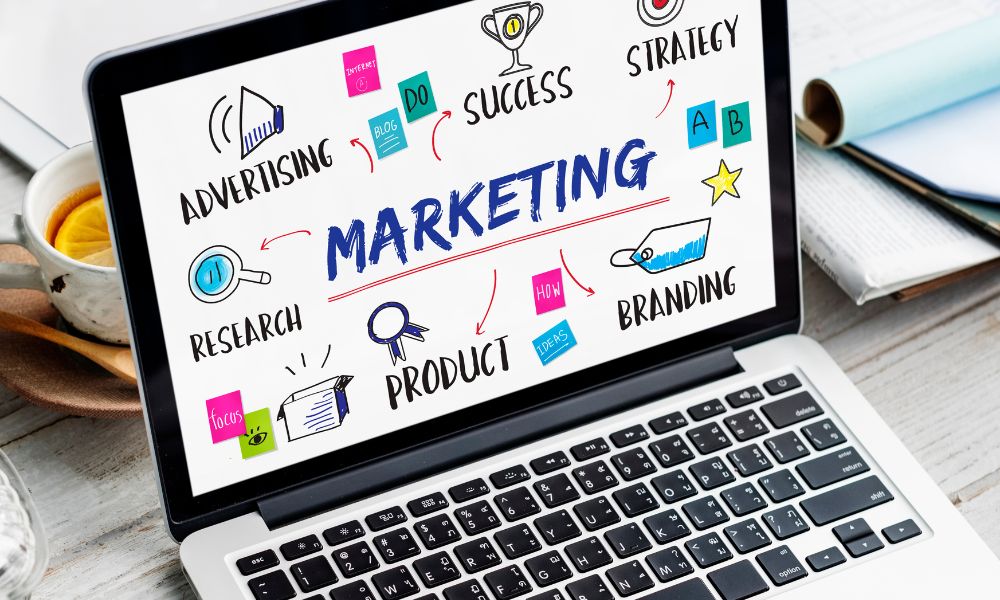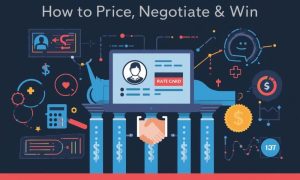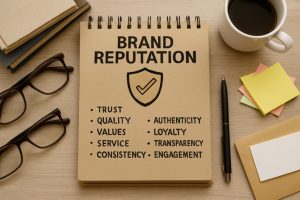Every business wants to be recognized, trusted, and remembered. That recognition doesn’t just happen by chance, it’s the result of building strong brand awareness. When people know your brand, they are more likely to engage with your products, recommend them to others, and see your company as a reliable choice.
Strong brand awareness also creates opportunities. It makes it easier to attract new customers, grow your community, and compete with established players in your industry. For brands that are just starting out, awareness is the first step toward building loyalty and long-term growth.
In this guide, we’ll explore why brand awareness matters, how to measure it, and the strategies that help businesses stand out in a crowded market.

What Is Brand Awareness?
Brand awareness is the level of familiarity people have with your business and how easily they can recognize it among competitors. It’s not just about whether someone knows your logo or tagline, it’s about whether they associate your brand with certain qualities, values, or experiences.
For example, when people think of athletic wear, certain global brands instantly come to mind because they’ve built strong recognition over time. That instant connection is brand awareness at work.
High brand awareness helps a business stand out, makes customers more likely to choose it over others, and lays the foundation for trust and loyalty.
Why Is Brand Awareness Important?
Brand awareness is one of the most important foundations of marketing. It’s what makes people recognize your name, remember your products, and choose you over competitors. When someone reaches for a soda and thinks of Coca-Cola, or orders a ride and says Uber, that is brand awareness in action.
It’s the reason people can instantly identify a logo, recall a tagline, or think of a company first when they need a specific product or service. When customers recognize your brand and connect it with positive experiences, they’re more likely to choose it again and recommend it to others.
For smaller companies and growing brands, building awareness may not happen overnight, but it plays a key role in trust, customer loyalty, and long-term growth. A well-established brand presence not only keeps you at the top of customers’ minds but also strengthens loyalty, making it easier for people to choose you again and recommend you to others.
Awareness also has a direct impact on growth. It helps companies introduce new products with confidence, attract quality hires, and compete more effectively in their industries. When a brand is widely recognized, it signals that marketing efforts are resonating and that the business has carved out a meaningful place in the market.
How Brand Awareness Works (and Common Misconceptions)
Brand awareness often gets confused with other marketing terms, but it has its own role in the bigger picture. Awareness is simply the ability of people to recognize or recall your brand. It’s the first step toward building a relationship with potential customers, but on its own, awareness doesn’t guarantee loyalty or sales.
Difference between awareness and brand equity
Awareness means people know your brand exists. Brand equity, on the other hand, is the value your brand holds in their minds. A customer may recognize two shoe brands equally well, but if they perceive one as more reliable, stylish, or worth the price, that’s brand equity in action. Confusing the two can lead businesses to focus only on recognition, when the real long-term goal should be positive associations that drive purchase decisions.
How consumers move from awareness → consideration → loyalty?
Awareness is just the entry point of the customer journey. Once someone knows your brand, they move into consideration, where they weigh you against competitors. Positive reviews, social proof, and strong messaging all help push them closer to choosing you. With consistent experiences and value, awareness, and consideration eventually grow into loyalty, where customers stick with your brand and recommend it to others.
Common misconceptions about brand awareness
- Awareness equals sales: Just because people know your name doesn’t mean they’re ready to buy. Strong awareness increases visibility, but you still need the right positioning and value to convert customers.
- Only big brands need awareness: Smaller and growing businesses often think awareness campaigns are for corporations with large budgets. In reality, consistent awareness efforts are even more critical for startups breaking into a crowded market.
- Awareness can’t be measured: While it’s harder to track than direct sales, awareness can be measured through surveys, social listening, search volume, website traffic, and engagement metrics. Treating it as “unmeasurable” is a mistake that can hold back growth.
- It’s all about advertising spend: Many assume awareness only grows through massive ad campaigns. In practice, content marketing, influencer partnerships, and customer advocacy can build awareness just as effectively, often more authentically, than paid media alone.
💡For brands focused on social-first campaigns, the Social Influencer Hiring Platform helps match you with creators already active in your target channels.

10 Proven Strategies to Increase Brand Awareness
Building awareness isn’t about one single campaign. It’s the result of consistent actions across multiple channels that help people recognize and trust your brand over time. Below are ten proven strategies that companies of all sizes can use to boost visibility and stay top of mind.
1. Prioritize brand consistency across channels
Consistency builds recognition. From your logo and color palette to the tone of voice in your posts, the more aligned your communication is, the easier it becomes for people to remember and trust you. Whether a customer sees your ad, lands on your website, or interacts on social media, the brand identity should feel familiar and cohesive. Over time, this consistency strengthens credibility and makes you stand out in a crowded market.
2. Go beyond products – share your values & mission
Products and services may spark interest, but values and mission create lasting connections. Audiences today want to know what a brand stands for. Sharing stories about your company’s mission, social impact, or behind-the-scenes culture helps customers feel aligned with your purpose. For example, a fitness brand that promotes wellness beyond workouts, such as mental health or sustainability, will connect more deeply with its community.
3. Leverage social media (and interact with followers)
Social platforms are one of the most effective tools for boosting awareness, but simply posting content isn’t enough. Engaging directly with followers, replying to comments, resharing user posts, or even asking for feedback, makes people feel valued and encourages organic word-of-mouth. The more interactive your presence is, the more likely your brand will stay at the top of mind.
4. Partner with influencers & creators in your niche
Working with influencers or content creators gives your brand immediate access to established audiences. Instead of relying solely on ads, influencers act as trusted voices, introducing your product in authentic ways. The key is choosing creators who align with your values and genuinely appeal to your target market. This makes the partnership feel less like advertising and more like a recommendation, which drives higher trust and awareness.
💡Instead of manually searching for creators, tools like Influencer Discovery Tool help brands quickly identify niche influencers that align with their audience and brand values.
5. Launch thought leadership programs (content, podcasts, webinars)
Becoming a trusted source of knowledge positions your brand as an authority. Publishing insightful blogs, hosting webinars, or running a podcast can show your expertise while reaching audiences beyond direct customers. For example, a software company that runs webinars on industry trends not only provides value but also becomes a go-to name for expertise, which strengthens brand recognition over time.
6. Use omnichannel marketing for wider reach
Different people discover brands in different places. Omnichannel marketing ensures your message reaches audiences wherever they spend time, whether that’s on social media, email, search engines, or offline events. By keeping your messaging consistent across these touchpoints, you create multiple opportunities for people to encounter and remember your brand.
💡Instead of managing influencer discovery across multiple apps, the Influencer Marketplace centralizes access to creators and campaign opportunities in one place.
7. Encourage and incentivize customer reviews & referrals
Word-of-mouth remains one of the most powerful drivers of awareness. Positive reviews and recommendations give your brand social proof and credibility. Encouraging customers to leave reviews or rewarding them for referrals builds trust and expands your reach organically. A simple referral program, like offering discounts for sharing your product with a friend, can spark a steady flow of new audiences.
8. Try paid campaigns (native ads, remarketing, sponsorships)
Paid promotion can boost awareness quickly, especially when targeting is precise. Native ads and remarketing campaigns put your brand in front of people who are most likely to connect with it. Sponsorships, whether online events or local initiatives, can also position your brand in front of new audiences while building credibility through association.
9. Create memorable, shareable content (be creative, be bold)
Brands that stand out are often the ones that take creative risks. Content that surprises, entertains, or sparks emotion is more likely to be shared, multiplying your reach. This could be a playful campaign, a bold visual design, or even a storytelling angle that feels fresh and different. The goal is to give people a reason to remember and talk about your brand.
10. Measure awareness KPIs (brand searches, direct traffic, mentions)
Awareness is only effective if you can track it. Monitoring metrics such as branded search volume, website direct traffic, social mentions, and engagement rates helps you understand if your strategies are working. Measuring consistently also allows you to adjust campaigns and double down on what’s delivering results.

The Role of Content Marketing in Brand Awareness
Content marketing is at the core of brand awareness because it gives people reasons to notice, trust, and remember your business. Instead of relying only on ads, consistent content allows brands to show expertise, provide value, and stay present where customers are searching and engaging. The key is to not just publish content, but to make sure it’s discoverable, memorable, and adaptable.
Blogging, SEO, and evergreen content
One of the most reliable ways to build awareness is by answering the questions your audience is already asking online. Blogging with SEO in mind ensures your content appears in search results and brings new people into your funnel. Creating evergreen pieces, like guides or how-tos that stay relevant long term, keeps your brand visible and useful over time, helping awareness grow steadily.
Using storytelling and brand voice to stand out
Getting found is one part of the equation; being remembered is the other. This is where storytelling comes in. Sharing stories about your brand values, customer experiences, or even your team adds a personal touch that separates you from competitors. When content carries a consistent brand voice, it reinforces recognition and helps people connect emotionally, not just logically.
Repurposing content across multiple formats (video, guides, social)
Once you’ve created content that attracts attention and tells your story, the next step is to amplify it. Repurposing lets you take one core idea and present it in multiple formats, from blog posts and videos to social media snippets and downloadable guides. This not only increases reach but also reinforces your brand message across channels, making it more likely to stick with your audience.
How to Create Brand Awareness From Scratch?
If you’re starting out or reintroducing your brand to the market, awareness begins with the basics. Before you think about ads or influencer campaigns, the foundation needs to be clear and consistent so every message reinforces who you are and what you stand for.
Start with a strong brand identity (name, logo, voice). Your identity is the first impression people have of your business. A clear, consistent name, logo, and brand voice help customers recognize you and build familiarity over time. Without this, other awareness efforts can fall flat.
Integrate marketing into the overall brand strategy. Once identity is set, marketing becomes the vehicle that carries it forward. Instead of treating marketing as a separate function, it should tie directly to business goals, positioning, audience targeting, and messaging. When strategy and marketing move together, every campaign reinforces the brand rather than feeling like a one-off promotion.
Build an SEO-driven content strategy. From there, visibility is the next step. SEO ensures your brand shows up where people are already searching. By creating content that answers questions, solves problems, and highlights your expertise, you build credibility while staying discoverable. Over time, an SEO-driven content plan becomes a compounding source of awareness.
Launch a referral or ambassador program. Finally, the most powerful awareness often comes from people, not ads. Referral programs and brand ambassador partnerships turn customers into advocates. When people recommend you to friends or showcase your products, it creates trust that no campaign can fully replicate. Combined with SEO and consistent marketing, referrals help turn first impressions into lasting recognition.
In short, starting from scratch means focusing on the basics: identity, strategy, visibility, and advocacy, all working together to establish recognition and trust.
How to Measure Brand Awareness?
Awareness may feel less measurable than sales, but there are clear ways to track it. Measuring awareness helps you see what’s working, refine your strategy, and prove the value of your marketing efforts.
- Brand recall & recognition surveys
Surveys are a direct way to understand how well people recognize and remember your brand. You can measure aided recall (when people identify your brand from a list of competitors) and unaided recall (when people name your brand without prompts). Both show how strongly your brand sits in the consumer’s mind.
- Social listening & engagement
Monitoring conversations across social platforms helps you see how often your brand is mentioned, in what context, and whether the sentiment is positive. Engagement metrics such as shares, comments, and user-generated content also reflect how connected people feel to your brand.
- Direct traffic and branded search volume
When people type your website directly into their browser or search your brand name on Google, it’s a strong indicator of awareness. Growth in direct traffic and branded searches shows that more people already know who you are and are actively seeking you out.
- PR and media coverage impact
Press mentions, media features, and industry publications all contribute to brand visibility. Tracking these appearances, along with their reach and audience, helps you understand how your reputation spreads beyond your owned channels.
Measuring awareness may not give the same clear ROI as sales campaigns, but it provides the insights you need to understand perception, track growth, and keep your brand top of mind.

Frequently Asked Questions (FAQs)
What builds brand awareness the fastest?
The fastest way to increase awareness is to combine paid campaigns with organic strategies. Paid ads, influencer partnerships, and sponsorships can quickly get your name in front of large audiences, while consistent content marketing and social media activity build long-term recognition. A mix of both usually delivers the best results.
What are the best KPIs for measuring brand awareness?
Common KPIs include branded search volume, direct website traffic, social media mentions, engagement rates, and survey-based brand recall. PR coverage and share of voice in your industry are also useful indicators. Tracking these together gives a more complete picture than relying on a single metric.
How long does it take to increase brand awareness?
It depends on your strategy and resources. With paid campaigns, you can see a spike in awareness within weeks, but sustainable recognition usually takes months of consistent effort. For smaller brands relying mainly on organic marketing, it often takes six months to a year to see measurable growth.
What’s the difference between brand awareness and brand recognition?
Brand awareness is about how familiar people are with your brand overall, knowing your name, what you stand for, and what you offer. Brand recognition is more specific: it’s when people identify your brand from visual or verbal cues, like a logo, slogan, or packaging. Recognition is one part of overall awareness.
Key Takeaways: Building Brand Awareness the Smart Way
Brand awareness is more than just getting your name out there. It’s about creating familiarity, building trust, and positioning your brand so people think of you first when they need what you offer.
The most effective approach is a balanced one:
- Stay consistent across every channel.
- Use storytelling and content marketing to create emotional connections.
- Invest in partnerships, referrals, and influencer collaborations to reach new audiences.
- Track KPIs to make sure your efforts are working and adjust where needed.
Raising awareness takes time, but every step compounds over the long term. Brands that focus on awareness today are better equipped to build loyalty, launch new products, and stand out in crowded markets tomorrow.
💡For brands that want expert guidance, an Influencer Marketing Agency can help design strategies that boost awareness while managing campaigns end-to-end. Tools like Hypefy bring discovery, outreach, and campaign management together in one place.



